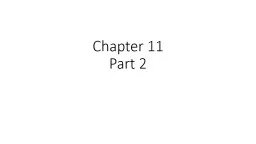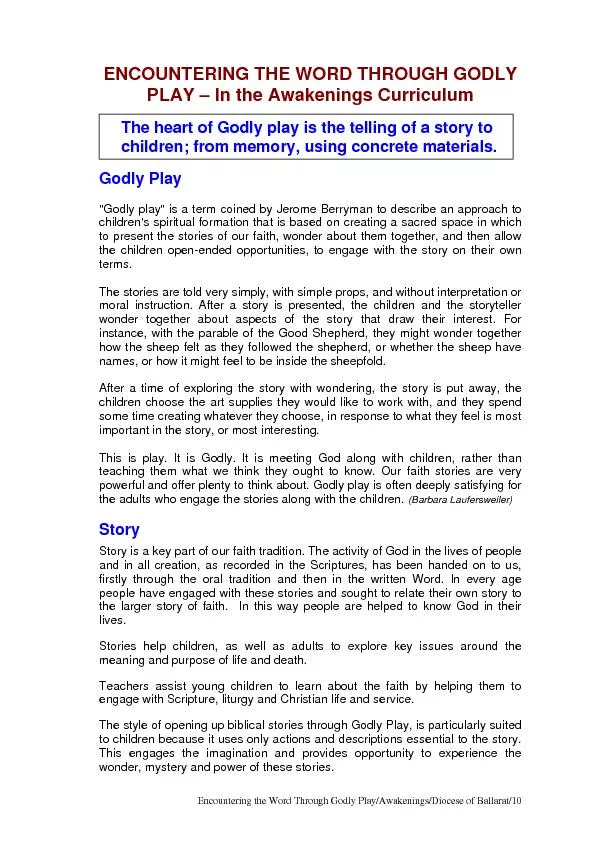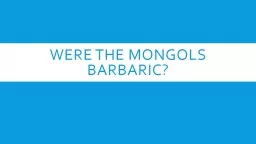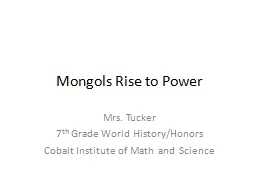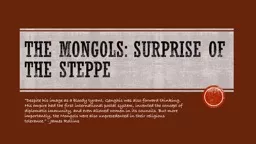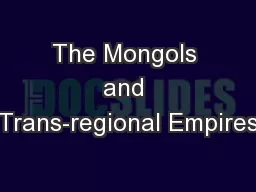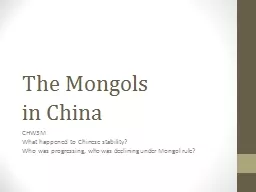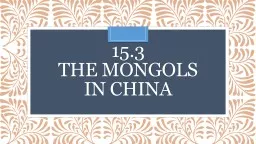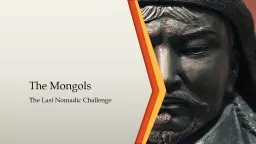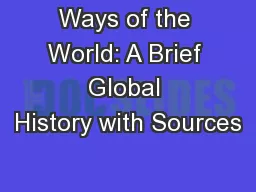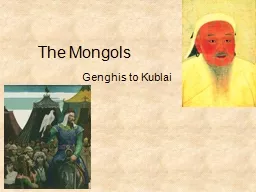PPT-Chapter 11 Part 2 III. Encountering the Mongols: Comparing Three Cases
Author : jane-oiler | Published Date : 2018-10-29
A China and the Mongols 1 Difficult conquest from 1209 to 1279 a Mongol conquest of China was difficult took from 1209 to 1279 2 Began in northern China a Began
Presentation Embed Code
Download Presentation
Download Presentation The PPT/PDF document "Chapter 11 Part 2 III. Encountering the..." is the property of its rightful owner. Permission is granted to download and print the materials on this website for personal, non-commercial use only, and to display it on your personal computer provided you do not modify the materials and that you retain all copyright notices contained in the materials. By downloading content from our website, you accept the terms of this agreement.
Chapter 11 Part 2 III. Encountering the Mongols: Comparing Three Cases: Transcript
A China and the Mongols 1 Difficult conquest from 1209 to 1279 a Mongol conquest of China was difficult took from 1209 to 1279 2 Began in northern China a Began in northern China ruled by dynasties of nomadic origin was vastly destructive . In a single bubble brainstorm what you already know about the Mongols! . http://www.youtube.com/watch?v=p9Ol0IJkU7c. The Nomadic Life. The Mongols were constantly on the move because they were pastoralists ( herding domestic animals) and those animals needed a pasture (land) to feed off of. rat/10 ENCOUNTERING THE WORD THROUGH GODLY PLAY – In the Awakenings Curriculum The heart of Godly play is the telling of a story to children; from memory, using concrete materials. Godly Pla Traditional view of . mongols. Mongols. Crash Course - MONGOLS. CLAIM. EVIDENCE. Mongols WERE barbaric. Mongols. were NOT barbaric. Were the Mongols Barbaric?. A: NO. B: YES. Heroes and Villains . in Him and Reaching the World. Recap Encountering God:. Reveals Him. Reveals Your Purpose. Creates Change. EGR: Encountering God, Growing . in Him and Reaching the World. Invest. Your Time. -- Mt . 6:33 . in Him and Reaching the World. Created to encounter the world by experience:. See. Hear. Smell. Taste. Touch/feel. EGR: Encountering God, Growing . in Him and Reaching the World. Ps 34:8 . "taste and see the Lord is good and blessed is the one who . Mrs. Tucker. 7. th. Grade World History/Honors. Cobalt Institute of Math and Science. Mongols in China. C. 1167 – . Temujin. Was Born. 1206 – . Temujin. as Genghis Khan. 1211 – Mongols in China. “Despite his image as a bloody tyrant, Genghis was also forward thinking. His empire had the first international postal system, invented the concept of diplomatic immunity, and even allowed women in its councils. But more importantly, the Mongols were also unprecedented in their religious tolerance.” . . 1) Learning Target: . To. . compare mixtures. . I can write . part-to-part. and . part-to-whole. . ratios. .. Homework. : . 1) . Complete . Notes on . pg. . 8 . of CS Inv. . 1 . by . watching the . As john green would say “They are the exception!”. The Mongols and their Surroundings. Lived as clans, north of the Gobi Desert. Everyone was skilled horse riders and valued hunting, courage, and warfare. What happened to Chinese stability?. Who was progressing, who was declining under Mongol rule?. Map of . Mongol Empire. University of Washington, A Visual Sourcebook of Chinese Civilization, . N.d.. , . Who were the Mongols?. These . nomads. , . or people who move from place to place in search of food, came from an area north of China called . Mongolia. . Living in movable tents called . yurts. ,. the Mongols raised . Introduction . to . t. he . Mongols . The Mongols were a pastoral nomadic people. From central Asia. Smaller populations that relied heavily on animals for food, transportation, and warfare. Organized around families, clans, and/or tribes . Third Edition. CHAPTER. 11. Pastoral Peoples on the Global Stage:. The Mongol Moment. 1200–1500. Copyright © . 2016 . by Bedford/St. . Martin’s. Distributed by Bedford/St. Martin's/Macmillan Higher Education strictly for use with its products; Not for redistribution.. The Mongols Genghis to Kublai The Steppe Steppe Culture Loyalty to kin/clan Courage culture Horsemanship Mobile (pastoralists & hunters) Animists Lots of raiding between tribes Traded with sedentary peoples for manufactured goods
Download Document
Here is the link to download the presentation.
"Chapter 11 Part 2 III. Encountering the Mongols: Comparing Three Cases"The content belongs to its owner. You may download and print it for personal use, without modification, and keep all copyright notices. By downloading, you agree to these terms.
Related Documents

